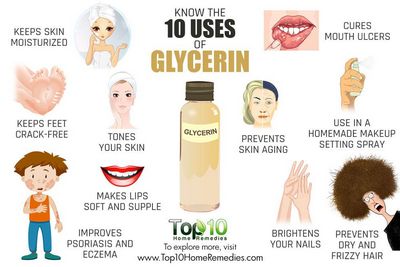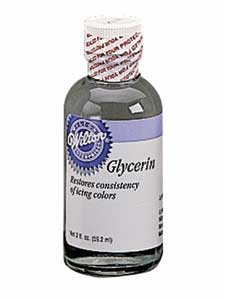Glycerin is an odorless, tasteless, viscous, sweet-smelling and non-toxic liquid.

The glycerin backbone is usually found in the lipids called glycolic acids. Because of its antiseptic and antibacterial properties it has become widely used in FDA recognized skin and burn treatment. Many creams are now being developed with glycerin as a base ingredient. This can be seen on the skin care labels.
Most people think that the glycerin base is the same thing as glycolic acid but the two are very different substances. Glycolic acid is a brownish liquid. On its own it does not have any taste or odor, however, it can be combined with a flavoring agent like glycerin or lye to create a flavor.
The glycerin base is usually found as a syrup form where it is mixed with other ingredients. Common flavors include: chocolate, raspberry, strawberry, apple, licorice, and cinnamon. These flavors can also be added to other products like soaps, shampoos and body lotions. This is why the glycolic acid and glycerin base combination are commonly seen in skin care products.
The glycolic acid and glycerin base are the main ingredients in most cosmetics. When they are combined they give the product a smoother texture and feel. In addition, they increase the thickness of the skin and make it firmer, as well as moisturizing and nourishing the skin. Glycerin also provides a barrier against irritation by acting as a lubricant between the skin’s outer layers.
While glycolic acid has some antibacterial and anti-inflammatory properties it should not be used on broken skin. If you break out from using glycolic acid and glycerin on your face, use glycolic gel. If you have broken skin try a moisturizer with glycerin.
Some glycerin based skin care products may contain added ingredients that provide additional benefits to the skin. They may be added to protect the glycolic acid, reduce irritation or improve the skin’s ability to absorb oils and other compounds.
One of the best ways to obtain glycerin is through harvesting it from the sap of a plant called glyconutylene or glycoside tree.

This tree produces glycolic acid naturally, but only when conditions are right. The trees are rarely planted commercially in America. In Europe they are harvested and converted into fuel for vehicles to produce fuel for heat and electricity.
The glycolic acid produced by the glycerin tree is not a pure glycerin. The oil is not the same in all varieties and it is not readily available so the manufacturers use a process to extract the oil.
The glycerin base is separated from the glycolic acid. This is done by taking a solution containing the glycolic acid and glycerin base and adding another solution, which contains sodium hydroxide, to make the final glycerin.
It is possible to buy glycerin base from health food stores or drug stores. Some people have used glycerin as an ingredient in homemade recipes. However, if you do this you must use a commercial glycerin base as it may contain some other ingredients that cause irritation to the skin. or have other side effects.
There are other types of glycerin bases available. They include glycerin hexahydrate, which has a longer shelf life and does not turn rancid. when it is heated, or glycerin acetate, which is made by the Acetone Company. Glycerin hexahydrate is the best choice to store at room temperature because of its stability.
Another glycerin base is glycolic acid hexahydrate which is sold under many names and is the basic glycolic acid. This type is less stable and has to be stored at low temperatures or kept in a refrigerator. It can be used for cooking or other applications.
Although glycolic acid is used as a preservative in some cosmetics, glycerin base is usually not needed to be preservative free. It will deteriorate rapidly and become rancid after time. A good preservative is glycerin. It is also important that the glycerin base is never used directly on the skin.